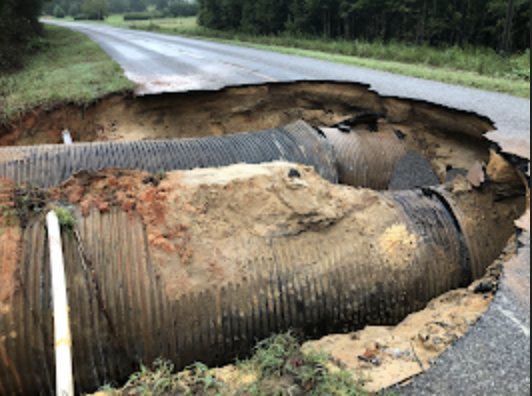How high can it go?
Published 12:00 am Saturday, July 9, 2005
Ready, set, pump.
Travelers continue to gulp fuel up in record gallons even as national gasoline prices are approaching all-time highs, said local convenience store owners and managers.
"Seems like the higher it gets the more they ride," said H.K. Sasser of the Traveler's Mart in Brantley. "Do you believe that? We sell more gas now then we did when it was cheaper."
Patsy Brooks, manager of Big and Little agreed.
"People are going to drive regardless of what they have to pay," she said. "We're pumping more gas then we've ever pumped in our lives."
The retail gas of gasoline, nationally, now averages $2.22. Gas at stations around Crenshaw County varies from between $2.05 and $2.15 at the pump. The price of gas is directly influenced by the price of crude oil, which is currently hovering around $60 a barrel. Oil prices are affected by a number of factors including: speculation by oil traders, the war in Iraq, violence in the Middle East, limited supply and increased demand.
But the general consensus, at least thus far in the skyrocketing petroleum trade, is that gas has become like food - a necessity. Plus, the majority of Americans, long the beach goers and mountain skiers aren't about to cut back on summer vacation time because of an extra $0.50 or $0.60 per gallon at the gas pump.
One traveler from Fort Walton who stopped in Brantley for gas was making her second trip north in less than three weeks. She said she never considered not traveling, even with the high gas prices.
"This trip was something we had planned and we decided to go on," she said.
She said gas prices in northern Florida - especially in the beach areas - was approximately 10 cents higher than in Crenshaw County.
And while paying over $2 for a gallon of gasoline has become customary, analysts expect prices to climb even higher as winter approaches. Traders will start turning their attention towards winter heating oil and any sign of a low supply is likely to escalate oil prices.
"Today's prices may feel cheap come the fourth quarter," Phil Flynn, an analyst at Alaron Trading Corp. in Chicago told the Northwest Indiana News. Analyst Tom Kloza at Oil Price Information Service in Wall, NJ, also said
"there is a 50-50 chance that prices will surpass their all-time April 11 highs between Aug 1 and October 15."
Oil analysts also believe tradition indicates there will be drop in gas prices following the Fourth of July - marked this past weekend as the busiest travel weekend ever by American Automobile Association - but the drop will be short lived.
The public's demand for gas, said Clay Ingram, public relations manager for Alabama's division of the AAA, will not go away.
"That's the No. 1 factor," said Ingram. "In the 60's, 70's and 80's, the demand would fall off because not that many people were driving. The last year or so when we've been setting prices, the demand has not dropped off at all. It's a lot of factors that could contribute to this. A lot more people are driving in the U.S. today compared to 10 years ago. The demand for gas is coming from more drivers and people are driving vehicles that don't get good gas mileage. There are a lot more people driving SUV's and bigger vehicles that don't get good gas mileage. People are driving vehicles that get 12 or 14 miles a gallon is keeping that demand up pretty high, pretty consistent. Probably the biggest thing we are going to have to do is reduce the demand for it. We still have pretty strong inventory around the country, we just have to find ways to use less vehicles and gas-guzzling cars for something that gets better gas mileage. We are trying to encourage someone to reduce driving as much as possible."
Recently, one oil trader predicted paying $3 per gallon for gasoline would be likely for most Americans by next summer.
High gas prices have also become a focus of the scientific community. Last week, Science Magazine released "What Don't We Know?", the Top 25 questions facing scientists in the next 100 years.
The No. 24 question? "What can Replace Cheap Oil - and When?" Geologists argue about the when, but all
agree that using oil as a fuel source will likely end this century.
Some think oil production will peak at the end of this decade while others expect production to top off around the year 2050. Oil will then go the way of coal and the wood burning stove as a fuel
and heating source.
Global demand for oil has risen one to two percent each year. 40 percent of
the United States' energy consumption is from oil.


